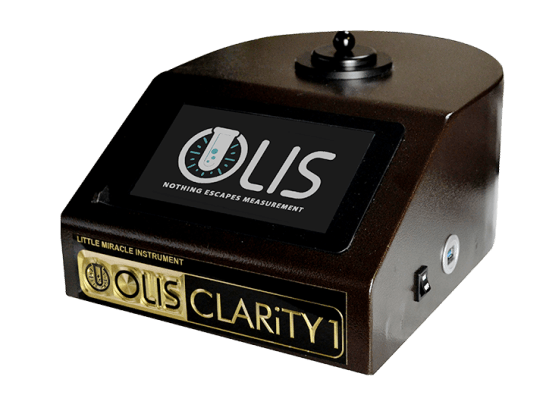Some Of Uv/vis
Some Of Uv/vis
Blog Article
Things about Uv/vis/nir
Table of ContentsThe Best Strategy To Use For Uv/vis/nirThe Facts About Uv/vis/nir UncoveredGetting My Uv/vis/nir To WorkThe Ultimate Guide To Circular DichroismHow Uv/vis/nir can Save You Time, Stress, and Money.

Although spectrophotometry is most typically applied to ultraviolet, visible, and infrared radiation, modern-day spectrophotometers can question large swaths of the electro-magnetic spectrum, including x-ray, ultraviolet, visible, infrared, and/or microwave wavelengths. Spectrophotometry is a tool that hinges on the quantitative analysis of molecules depending upon just how much light is absorbed by colored compounds.
The Best Guide To Uv/vis/nir
A spectrophotometer is frequently utilized for the measurement of transmittance or reflectance of options, transparent or opaque solids, such as polished glass, or gases. Lots of biochemicals are colored, as in, they take in visible light and therefore can be determined by colorimetric procedures, even colorless biochemicals can frequently be converted to colored compounds ideal for chromogenic color-forming responses to yield compounds suitable for colorimetric analysis.: 65 However, they can likewise be developed to measure the diffusivity on any of the noted light varieties that generally cover around 2002500 nm utilizing different controls and calibrations.
An example of an experiment in which spectrophotometry is utilized is the determination of the stability constant of a service. A specific chain reaction within a solution may occur in a forward and reverse instructions, where reactants form products and items break down into reactants. At some point, this chain reaction will reach a point of balance called a stability point.
Circularly Polarized Luminescence for Beginners
The amount of light that travels through the service is indicative of the concentration of certain chemicals that do not permit light to pass through. The absorption of light is because of the interaction of light with the electronic and vibrational modes of molecules. Each kind of molecule has an individual set of energy levels associated with the makeup of its chemical bonds and nuclei and hence will absorb light of particular wavelengths, or energies, leading to unique spectral properties.
Making use of spectrophotometers spans numerous scientific fields, such as physics, products science, chemistry, biochemistry. circular dichroism, chemical engineering, and molecular biology. They are extensively used in numerous markets including semiconductors, laser and optical production, printing and forensic assessment, as well as in labs for the study of chemical substances. Spectrophotometry is typically used in measurements of enzyme activities, decisions of protein concentrations, determinations of enzymatic kinetic constants, and measurements of ligand binding reactions.: 65 Eventually, a spectrophotometer is able to determine, depending upon the control or calibration, what compounds are present in a target and precisely just how much through calculations of observed wavelengths.
Created by Arnold O. Beckman in 1940 [], the spectrophotometer was developed with the help of his colleagues at his company National Technical Laboratories founded in 1935 which would become Beckman Instrument Company and ultimately Beckman Coulter. This would come as a service to the previously developed spectrophotometers which were not able to take in the ultraviolet properly.
The Only Guide to Uv/vis
It would be discovered that this did not give satisfying outcomes, therefore in Model B, there was a shift from a glass to a quartz prism which permitted better absorbance results - spectrophotometers (https://www.4shared.com/u/FvsNFVfH/julieanndesalorenz30606.html). From there, Design C was born with an adjustment to the wavelength resolution which wound up having 3 systems of it produced
It irradiates the sample with polychromatic light which the sample soaks up depending upon its homes. Then it is transferred back by grating the photodiode selection which identifies the wavelength region of the spectrum. Ever since, the production and application of spectrophotometry gadgets has actually increased immensely and has actually turned into one of the most ingenious instruments of our time.

Our Uv/vis/nir PDFs
The grating can either be movable or fixed.
In such systems, the grating is fixed and the intensity of each wavelength of light is determined by a various detector in the range. When making transmission measurements, the spectrophotometer quantitatively compares the portion of light that passes through a reference solution and a test solution, then electronically compares the intensities of the two signals and computes the percentage of transmission of the sample compared to the referral requirement.

Report this page